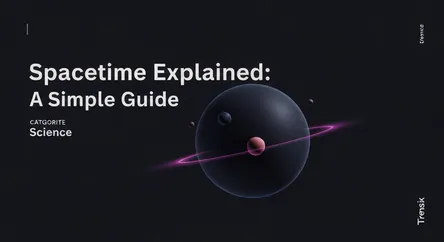Science
Spacetime Explained: A Simple Guide

Discover spacetime, the four-dimensional fabric of the universe that combines space and time. Learn how gravity is a curve in this cosmic fabric.
What is it?
Spacetime is a fundamental concept from Albert Einstein's theories of relativity, merging the three dimensions of space (length, width, and height) with the fourth dimension of time into a single, unified continuum. Instead of viewing space and time as separate entities, spacetime treats them as interwoven. Massive objects like planets and stars don't just sit in space; they warp or curve the fabric of spacetime around them. This curvature is what we perceive as gravity. Imagine a bowling ball placed on a stretched rubber sheet; smaller marbles rolling nearby will be drawn towards the curve created by the ball, much like how Earth orbits the Sun.
Why is it trending?
Interest in spacetime surges with every new cosmic discovery that tests the limits of Einstein's theories. The direct detection of gravitational waves by observatories like LIGO, the first-ever image of a black hole's event horizon, and deep-field images from the James Webb Space Telescope all provide powerful evidence for the existence and behavior of spacetime. These breakthroughs make an abstract concept tangible and fuel public fascination with the fundamental nature of our universe.
How does it affect people?
The effects of spacetime are not just theoretical; they are essential to modern technology. The Global Positioning System (GPS) in your phone or car is a prime example. Satellites orbiting Earth experience time at a slightly faster rate than we do on the surface due to differences in gravitational pull and velocity (a phenomenon called time dilation). GPS systems must constantly correct for this relativistic effect on spacetime. Without these corrections, your GPS navigation would accumulate errors of several kilometers every single day, making it practically useless.